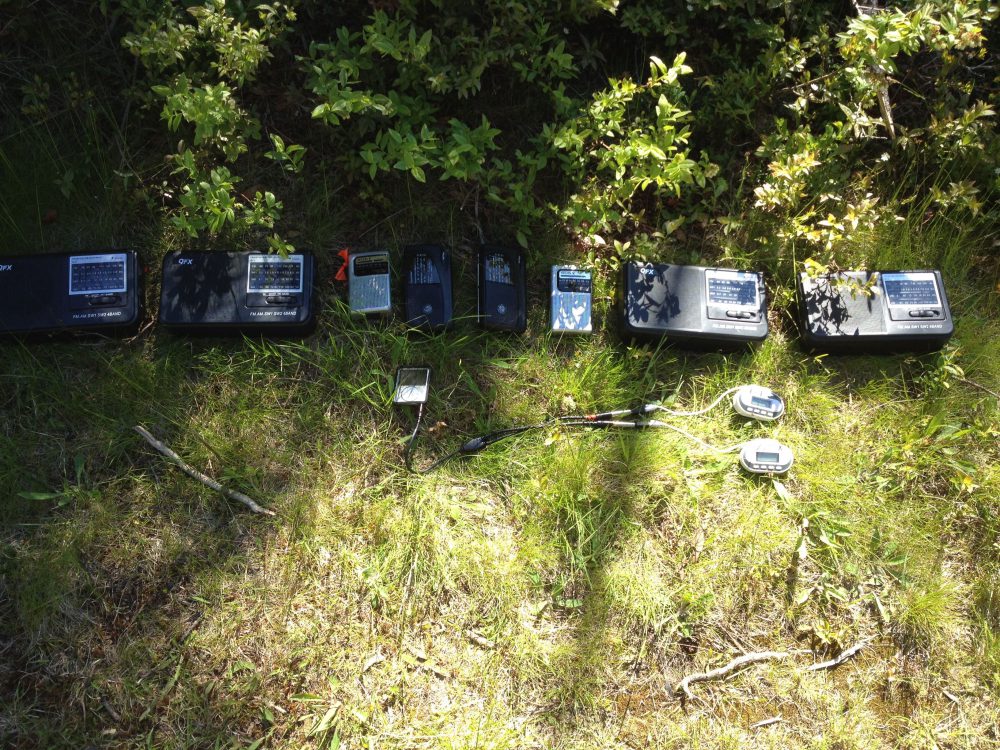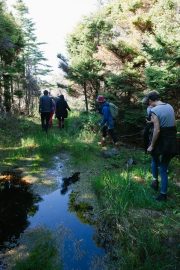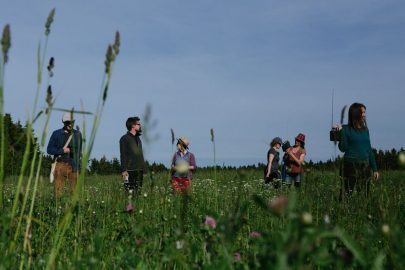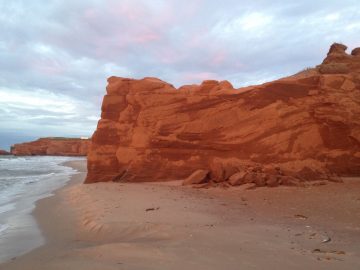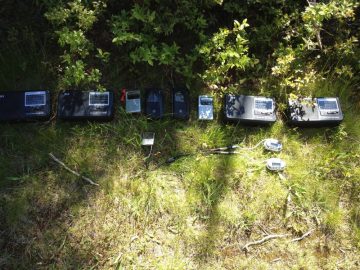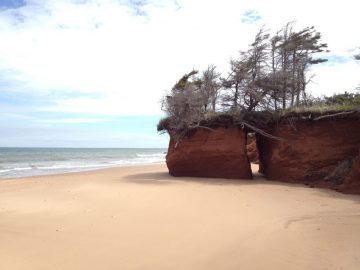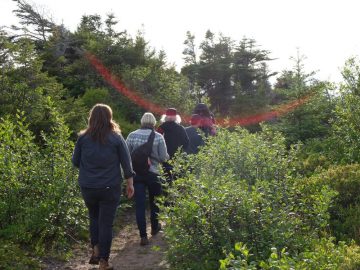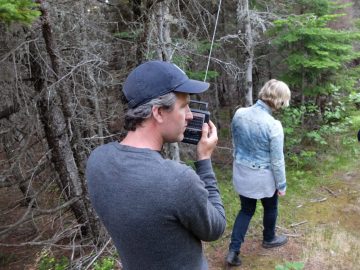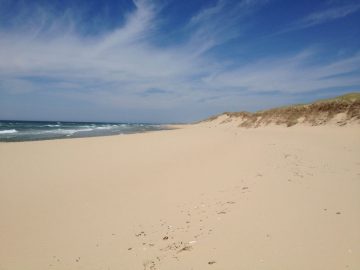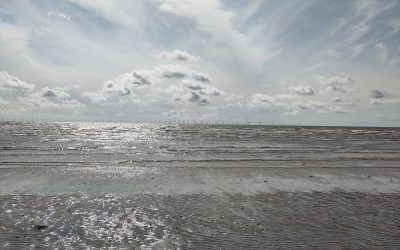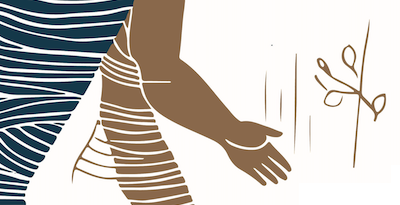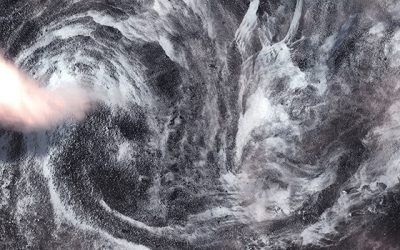For three weeks (5 – 26 June 2016) I took part, as one of fifteen artists, in the Chant des pistes / Songlines artist residency on the Magdalen Islands archipelago in Quebec, Canada, hosted by AdMare Centre D’Artistes en Art Actuel and curated by Caroline Loncol Daigneault (see her post on the event website for a beautiful description of the islands’ mobility and the theme of the residency).
The contours of the islands are continuously shifting as a result of erosion from the sea and wind, and the islands’ dunes are characterized by what a local pamphlet refers to as “mobile stability”. Red sandstone cliffs are constantly being eroded, forming miles of sand beaches. The sand is swept around the perimeter of the islands creating dunes that shift in number and position on a yearly basis. The processes at the meeting point between land and sea became the focal point of the work that I created and presented during the residency, entitled “Compositional Routes of the Magdalen Islands”.
During the first week I made hours of audio recordings in the littoral zone all around the islands. These recordings consist largely of the infinite variety of sounds produced by water meeting various surfaces and coursing through cracks, crevices, and caves, moving stones, and rolling onto sand beaches. During this week I also explored the interior of the islands and chose a secluded network of paths that became the site for the work.
In the second week, using only the sounds I had recorded along the coast I composed a sound work to be listened to/performed by up to 15 people at a time using 8 radios during a 45 minute group walk through the chosen site. The piece was created and presented with a special attention to situated composition, using the place to guide compositional procedures and the collective performance of the work.
I used granular synthesis throughout the work, a process that breaks a sound into ‘grains’ that can then be redistributed and reorganized to transform the original sound and create new sounds. This process resonates with the ever-moving grains of sand that form the islands’ shifting dunes.
I used micro fm radio transmitters with a range of 10-30 feet to send the work to 8 radios carried by visitors while collectively walking the chosen path through forests and fields. The zone of reception constituted by this process is constantly in flux, and at the edges the composition is eroded by white noise. Rather than operating as individual listening devices, the 8 portable radios carried by visitors work together through motion to create a continuously morphing island of sound.
The work was performed twice with two different groups of 15 people. Listen to a short excerpt from one of the collective walking performances:
Photo credit (above): Nigel Quinn
Many thanks to Caroline Loncol Daigneault, Laurène Janowsky, Alphiya Joncas and all at AdMare for putting together this wonderful residency. And many thanks to all the other artists and visitors who took part!

